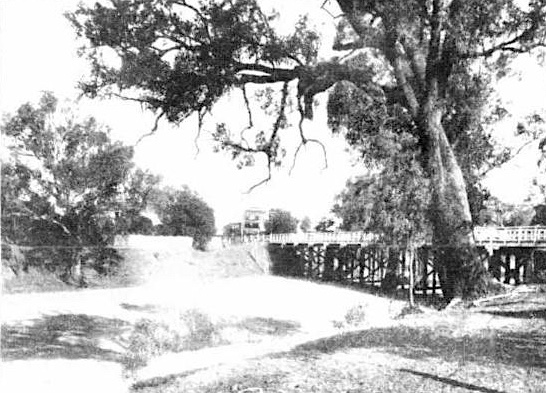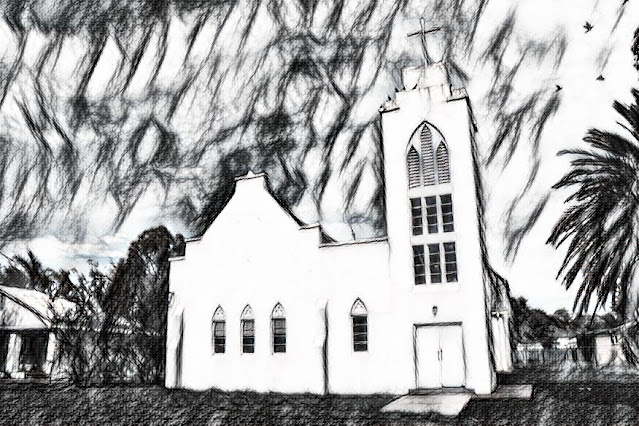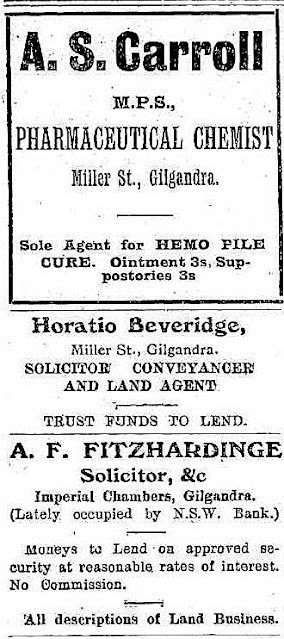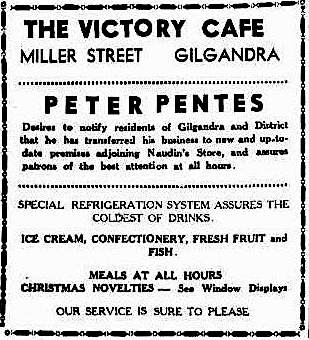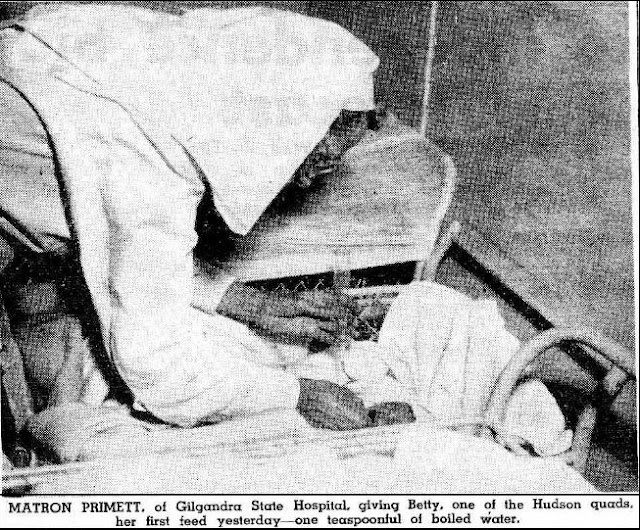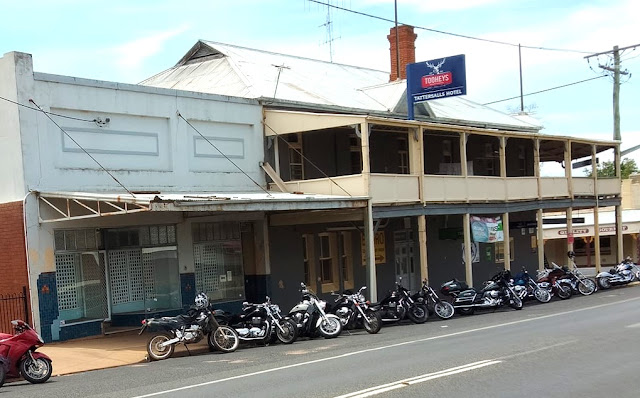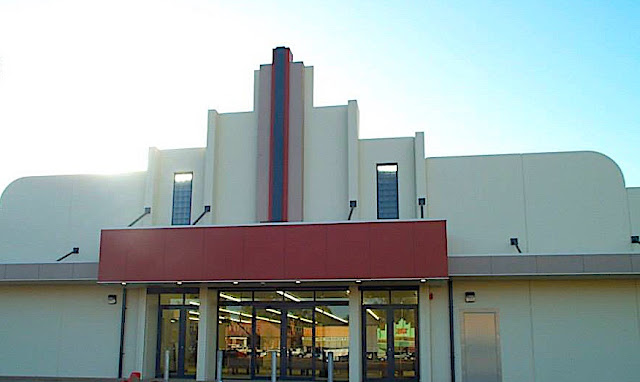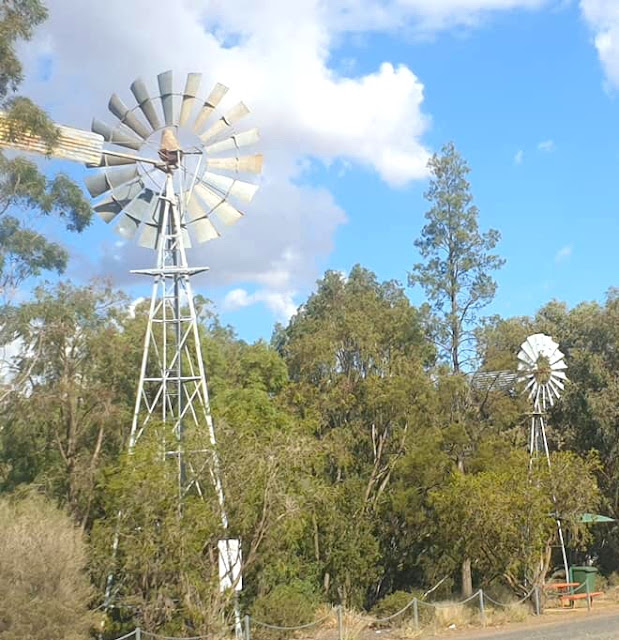The Background
 |
| Hanging outside Newgate Prison |
In Britain in 1688, there were 50 offences on the statute book, for which the death penalty could be imposed. By 1776, there were almost four times as many crimes punishable by death.
1776 was also the year that Britain halted transportation of convicts to its American colonies due to the outbreak of war and the Declaration of Independence.
Transportation as punishment for criminal offences was next in severity to the death sentence.
The Elizabethan Act of 1597 had
first introduced transportation into English law "For the punishment of Rogues, Vagabonds, and Sturdy Beggars – to be banished out of this Realm and all other Dominions thereof-".
Since the 1718
Transportation Act, about 57,000 convicts were sent to the American colonies.
British prisons became full, and prison ships called hulks were used. The first hulk used as a prison was the
Tayloe, moored in the Thames in London in 1775. The Home Office, however, offered pardons to prisoners who joined the Army or Navy or voluntarily left the British Isles
for the duration of their sentence.
 |
| Prison hulk HMS Success at Hobart, Tasmania, Australia |
Much pressure was on Home Secretary, Lord Sydney, to find an alternative destination to send convicts from the overflowing prisons.
The sloop HMS
Nautilus was sent to explore the west coast of Africa and to select ''a proper spot for the
making of a settlement if … judged expedient''.
Das Voltas Bay on the southwest coast of Africa was examined and judged unsuitable for a penal colony, as there was ''no bay, river or inlet but only a steep barren rocky shoreline … without … a drop of fresh water or … a tree''.
In 1783, James Matra, who had travelled on the HMS
Endeavour with Captain James Cook in 1770, proposed a "Settlement at New South Wales". Cook's opinion of Matra, however, had been that he was "good for nothing".
 |
| Replica of the sailing ship HMS Endeavor, (Dennis4trigger) |
Sir Joseph Banks, the famous botanist who also sailed to Australia in 1770, on the HMS Endeavour, was asked to give his advice in a report to a committee of the House of Commons about where in the world to establish a British penal colony.
Joseph Banks recommended Botany Bay as the site for a penal colony as: ''.....in every respect adequate to the purpose''. Although, Banks had
described the site in his journals as being swampy, with sandy soil.
James Cook died in 1779 and was involved in exploration rather than colonisation.
Orders Issued
On August 18 1786, Lord Sydney instructed Treasury to: ''forthwith'' provide ''a proper number of vessels for the conveying of 750 convicts to Botany Bay''.
The First Fleet of 11 ships left Portsmouth on 13 May 1787 with more than 1480 men, women and children on board. As well as British and Irish convicts, there were African, American, French, and around 16 Jewish people on board.
 |
| Convicts embarking for Botany Bay, NSW, Rowlandson, Thomas, 1756-1827 |
Commanded by Captain Arthur Phillip, the journey of The First Fleet lasted eight months.
Sailing into the unknown, across the ocean route used only once by Abel Tasman and twice by James Cook, the convicts knew that they had little chance of seeing
their homeland or loved ones again.
Once out at sea, Phillip allowed the convicts on deck: “in order to breathe purer air". The fleet would sail via Tenerife (Canary Islands), to Rio de Janeiro (Brazil) and Cape Town (South Africa).
Those undertaking the voyage to Terra Australis (Southern Land) suffered great hardships at sea. Only 25 deaths occurred during the voyage, probably due to careful planning and good treatment of the convicts under Phillip's conscientious and efficient command. Many convicts put on weight and were healthier when they arrived in Australia than when they left England.  |
| Construction and Real Estate Journal (Sydney, NSW : 1930 - 1938), Wednesday 23 February 1938 |
During the last leg of the journey, November–December 1787, the First Fleet was battered and tossed about as the ships made their way through the Roaring Forties (extremely powerful westerly winds).
Lieutenant Philip Gidley King described the dreadful situation on board HMS
Supply: "strong gales … with a very heavy sea running which keeps this vessel almost constantly under water and renders the
situation of everyone on board her, truly uncomfortable".
The miserable convicts, mostly confined to the hulls, were thrown about as the ships heaved and plunged through the sea, constantly wet and cold.
The first ship, HMS
Supply, reached Botany Bay on 18 January 1788. However, it was soon apparent that Botany Bay had poor soil, little freshwater and was exposed to harsh winds.
Captain Phillip decided to go north to Port Jackson.
Interestingly, a French expedition on a voyage of discovery under navigator Comte de La Pérouse had arrived off the coast on 24 January 1788. But the French ships were unable to enter Botany Bay until 26 January, the same day that the First Fleet moved to Sydney Cove in the harbour of Port Jackson.
La Pérouse and his ship would disappear at sea in that same year.
 |
| The grave of French priest Pere le Receveur, of the ill-fated La Perouse expedition, Sydney Mail and New South Wales Advertiser (NSW : 1871 - 1912), Saturday 29 November 1884 |
Governor Phillip, the first Governor of the first Australian colony, named the settlement at Port Jackson, Sydney, after, Lord Sydney, the British government's Home Secretary.
The formal instructions from King George III (America's last king and the Australian colonies' first) regarding the Aboriginal people were to "conciliate their affections" to "live in amity and kindness with them".
Phillip strove very hard to establish friendly and
peaceful relations and would greet the Gadigal clan of the Eora Nation (Aboriginal people of of Port Jackson) with open arms, or with a handshake, and guns laid on the ground. (The word Eora means "here" or "from this place")
However, the British also wanted to show their strength. Watkin Tench expressed this: "Our first object was to win their affections, and our next was to convince them of the superiority we possessed: for without the latter, the former we knew would be of little importance".
But the Eora people did not want the Berewalgal (strangers) here. They were a clan-based warrior culture with their own customary law.
 |
| Papers of Sir Joseph Banks - charts and illustrations, ca 1790s |
Each clan lived in well-defined areas, the kinship system and complex cultural practices governed their way of life.
The Eora women and children were kept away while the men yelled warnings. Lieutenant Philip Gidley King wrote in his journal: "All the natives which were seen when we first arrived at Port Jackson danced violently, shouting "woroo woroo, go away".
There were high points and low points. Two months after landing, the Eora and the British danced "hand in hand like children at a picnic". They both sang and frolicked about. One of the British men, much to the amusement of the Eora people did "apply [a] handkerchief where Eve did ye fig leaf". (he applied a handkerchief, in the style of a fig leaf, to a nude Eora woman)
 |
| Drawing from William Bradley's Journal, A Voyage to New South Wales, ca. 1802. 11. "First interview with the Native Women at Port Jackson New South Wales" |
 |
| Drawing from William Bradley's Journal, A Voyage to New South Wales, ca. 1802. 13. "View in Broken Bay New South Wales. March 1788'. Note: Eora and British dancing in the foreground |
As Australian Aboriginal people had no chiefs or other centralised institutions, Governor Phillip soon found that offers of friendship had to be repeated to the many different and separate clans. As time went on, it became apparent that the British knew little about this land and its people.
Lady Juliana
Chartered to transport female convicts to Australia,
Lady Juliana sailed before the Second Fleet with 226 female convicts, and arrived at Port Jackson on 6 June 1790. Most women convicts on board were London prostitutes: the
Lady Juliana developed a reputation as a floating brothel.
The ship's steward, John Nicol, who wrote an account of the voyage stated that: "when we were fairly out to sea, every man on board took a wife from among the convicts, they nothing loath".
 |
| Ladies of The Broad Arrow, World's News (Sydney, NSW : 1901 - 1955), Saturday 16 February 1952 |
The
Lady Juliana was well managed, kept clean and fumigated. The women were allowed free access to the deck and given fresh food.
Sailing via Tenerife, Cape Verde, Rio Janeiro (staying 7 weeks) and the Cape of Good Hope (staying 4 weeks), the women also provided "services" at the various ports. Or as John Nicol the ship's steward expressed it: "We did not restrain the people on shore from coming on board through the day. The captains and seamen, who were in port at the time, paid us many visits".
 |
| Wellington Times (NSW : 1899 - 1954), Thursday 2 November 1905 |
The voyage took an astonishing 11 months. Many of the convict women arrived pregnant, and seven babies were born during the voyage.
A British newspaper later commented:
"The female convicts carried to Botany Bay, by the
Lady Juliana transport, were delivered very soon after their arrival of thirty-seven children, the exact number of men in the ship!"
Elizabeth Barnsley, one of 151 convicts transported on the Lady Juliana, was described by John Nicol as: "a noted sharper and shop-lifter" whose family (she told him) "for one hundred years back, had been swindlers and highwaymen". She petitioned the government agent to wear her own clothes instead of convict dress (which she was allowed while at sea). She was also: "very kind to her fellow convicts, who were poor. They were all anxious to serve her. She was a queen among them".
Nichol also wrote about the parents of Sarah Dorset, who came to the ship before the
Lady Juliana left England. When they found that their daughter was on board, they blessed god that they had found their daughter at last. The parents came onto the ship, and the father said to Sarah, with great feeling, "my lost child". The mother sobbed, and Sarah fainted as she fell at their feet.
Sarah was convicted of stealing a greatcoat from a London pub, and had become a "disorderly girl" (prostitute). She was sentenced to seven years' transportation to the colonies.
The Second Fleet
The Second Fleet, also known as the "Death Fleet", consisted of six ships carrying settlers, convicts and supplies to Sydney Cove, Australia, in 1789 (four transport ships and two storeships).
Of the 1006 convicts transported aboard the Second Fleet, one quarter died during the voyage, and about 40 per cent were dead within six months of arrival in Australia.
The firm, Camden, Calvert & King, previously had been involved in transporting slaves to North America, undertook to transport, clothe and feed the convicts for a flat fee, whether they landed alive or not.
The
Justinian arrived in Sydney 20th June 1790, with much-needed supplies (Food harvests had failed). A week later, the
Surprise,
Neptune and
Scarborough, arrived with convicts in a terrible condition.
During the nine-month voyage, the convicts were chained below deck and the private contractors reduced the rations, to increase their profits.
Reverend Richard Johnson, who accompanied the First Fleet, later wrote: "The misery I saw amongst them was unexprissable [sic] … their heads, bodies, clothes, blankets, were all full of lice. They were wretched, naked, filthy, dirty, lousy, and many of them utterly unable to stand, to creep, or even stir hand or foot. … covered over almost with their own Nastiness".
 |
| Daily Telegraph (Sydney, NSW : 1931 - 1954), Wednesday 9 February 1938 |
The Chapman
The Chapman departed Cork, Ireland, with 200 male convicts on board, 15 March 1817, from the beginning keeping the convicts in double irons.
One of the sentry's reported that the convicts were picking the locks. Then the convicts broke the locks and swarmed the decks.
 |
| World's News (Sydney, NSW : 1901 - 1955), Wednesday 18 June 1930 |
An informer, Michael Collins, hoping for favours, claimed that a mutiny was being planned by the convicts so that they could sail away to America. Five convicts were flogged on suspicion.
The ship's cook then claimed that the convicts were forcing the hospital bulkhead, and the soldiers opened fire, resulting in 3 convicts being killed and 22 injured.
Terry Kiernan, a convict, later told the court of inquiry that most of the convicts were in bed, and all were in irons when the shooting began.
It was reported that third mate, Baxter, had shouted "Fire away, boys, and kill them all"
.The dead were thrown overboard, and the wounded were not treated until
the next morning, as the surgeon was too afraid.
Four men were declared to be ringleaders of the "mutiny", and chained on the open deck.
The convicts were put on half rations for the remainder of the journey. And 70-100 convicts were chained every night to an iron cable.
Surgeon Dewar told the convict Kiernan, "If any
one complains about rations I won't flog him. I'll shoot him".
The ship's log supplied evidence of the extreme brutality, which included floggings for convicts rattling their chains, speaking Irish or coughing.
 |
| News (Adelaide, SA : 1923 - 1954), Friday 22 October 1954 |
Governor Macquarie's secretary, Mr Campbell wrote: "This was inhuman, barbarous, and cruel beyond all reason — even a mutiny could not justify it".
Other members of the court reported to Macquarie that no criminal charges could succeed against the officers of the
Chapman.
Captain Drake, who was sent home under open arrest, took action to sue Macquarie for unlawfully detaining his ship during the inquiry. (
1.) "A History of Australia", by Majorie Barnard.
 |
| News (Adelaide, SA : 1923 - 1954), Friday 22 October 1954 |
The Westmoreland
The convict ship
Westmoreland transported 185 convict women and 18 children from various British prisons to Hobart Town, Van Diemen’s Land, arriving 3 December 1836.
 |
| Sunday Times (Perth, WA : 1902 - 1954), Sunday 22 October 1944 |
The Surgeon Superintendent of the
Westmoreland, Dr James Ellis, perhaps influenced by Quaker reformer Elizabeth Frye and the British Ladies Society for the Reformation of Female Prisoners, suggested to the Admiralty that the convict women would behave better
during the long voyages if they were gainfully employed in making patchwork.
 |
| The Rajah Quilt is a large quilt that was created by women convicts in 1841 whilst travelling from Woolwich to Hobart using materials organised by Lydia Irving of the British Ladies Society for promoting the reformation of female prisoners convict ship sub-committee. The quilt was presented to Jane Franklin. The quilt was sent back to Britain for Elizabeth Fry, the leader of the British Ladies Society. The quilt's provenance was then unclear until it was rediscovered in 1989. It is now held by the National Gallery of Australia |
Surgeon-Superintendent James Ellis also observed the seven foot clearance under the beams allowing sufficient room for lofty berths and a
good circulation of air, for the convict women.
The journey took 113 days.
Some facts
Between 1788 and 1868, more than 162,000 convicts were transported to Australia.
Around 40,000 Irish convicts were transported to Australia between 1791 and 1867, including at least 325 who had participated in either the Irish Rebellion of 1798, the rebellion of 1803 or the Young Ireland skirmishes in 1848.
The majority of convicts were transported for petty crimes. With the beginning of the Industrial Revolution in Britain in the 1780s, life became very difficult for many people. Machinery was invented that replaced cottage industries and farm work. Many people moved to the cities, which became overcrowded with poor and displaced people. People stole things to survive.
Almost 20% of Australians today have a convict ancestor.

























